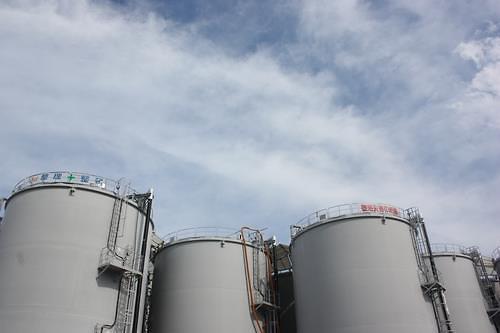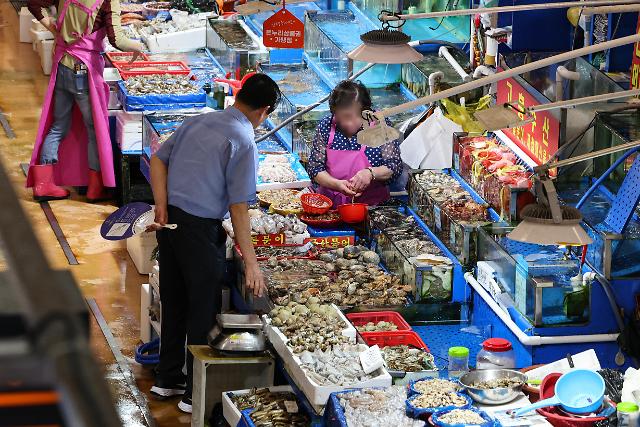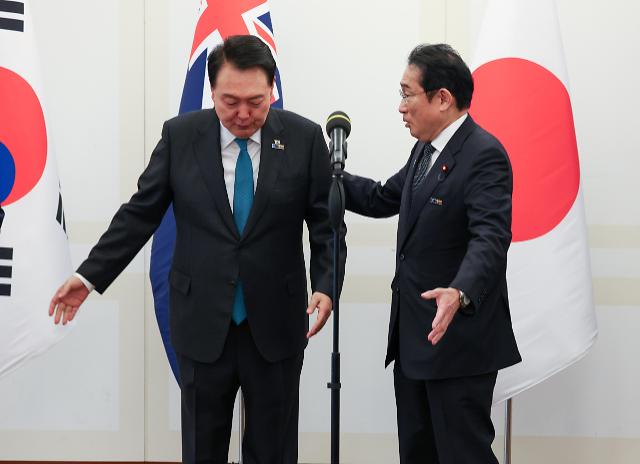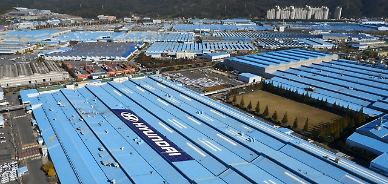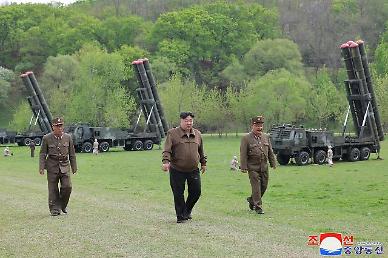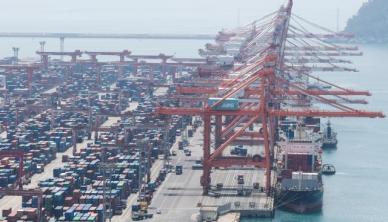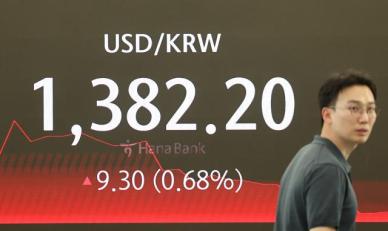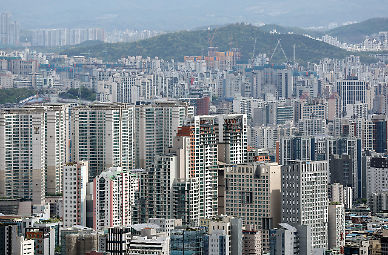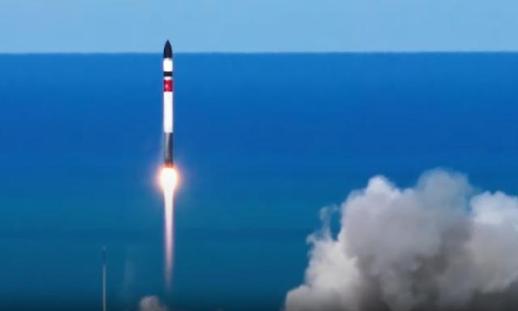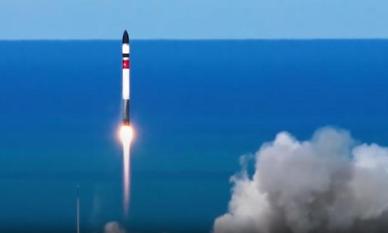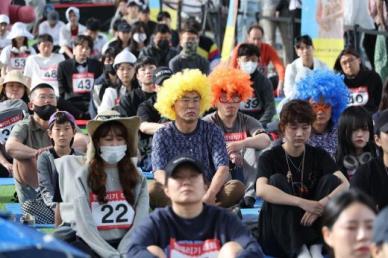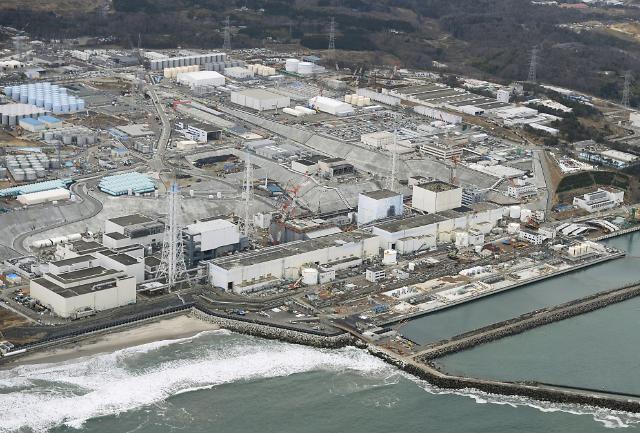
1.Environmental impact assessment of contaminated discharge water and monitoring of marine environmental
1.1 Environmental impact assessment of TEPCO and marine environmental monitoring
64 radionuclides were chosen for environmental impact assessment, including tritium, C-14 and 62 treatable nuclides by Advanced Liquid Processing System (ALPS). The activity concentration of tritium in the water of storage tanks of Fukushima Daiichi NPS was above the release limit regulated by Japanese government (60000 Bq/L). As the requirement of Japanese government, the activity concentration of tritium should be lower than 1500 Bq/L set by TEPCO, while the upper limit of annual discharge was set as 22TBq (2.2E+13 Bq). As for the ratios of 64 nuclides in contaminated water, 4 scenarios were considered, 3 of which came from the actual monitoring results for water in three groups of storage tanks (Three groups of storage tanks were chosen to be sampled and monitored 64 nuclides’ activity by TEPCO ), and the forth scenario assumed that the sum of ratios of nuclides (the ratio of actual activity concentration to release limit for each nuclide) was one except for tritium.
TEPCO applied their models for environmental impact assessment. TEPCO’s models which have been reviewed and testified several times came from the simulations of actual dispersion and concentration distribution of Cs in sea water after Fukushima accident. TEPCO chose 5 dispersion pathways as the radioactive materials’ pathways after discharge. Meanwhile, 5 external irradiation scenarios and 1 internal irradiation scenario were considered to evaluate human irradiation dosage. Data in survey of Japanese national health and influence in 2019 was cited as the character parameters for representative human.
Japanese government organized the discussion about the monitoring plan of the radioactive materials in sea water on March 30th, 2022, and decided to increase monitoring points to 54 from 12 in the coastal water of Fukushima. The increased points will be located around the discharge area in the range from 300 meters to 50 kilometers. The monitoring points will be set for tritium on the ocean surface and near the seabed. For the purpose of comparison with data after discharge, the tritium concentration in fish will be monitored this year to acquire the background data before discharge conducted by Japanese government. Japanese government planed to monitor four times every year, and will increase the monitoring frequency in future.
1.2 Other relevant research
Many simulations, evaluation and monitoring have been conducted concerning the dispersion of radioactive materials and impact on marine environment during the Fukushima accident and after discharging contaminate water into the sea.
At the international seminar hosted by Fukushima University, Prof Daofu Aoyama in University of Tsukuba published his research that after the radioactive nuclides like Cs-137 discharged into the sea during the accident of Fukushima Daiichi NPS arrived the east coast of United States, part of nuclides will transport to the north and return to the northeast coast of Japan in 7 or 8 years. In addition, Prof Daofu Aoyama sampled surface seawater of 761 points in the North Pacific, and detected Cs-137 and Cs-134 originated from the waste water of Fukushima accident.
Korean experts in Chungnam Institute held a conference in the topic of “Treatment of the contaminated water to be discharged into the sea by Japanese government” on June 29th, 2021. It was suggested that following impact should be further discussed: (1) the possibility of cumulative effect of Cs, Sr and other radioactive nuclides; (2) the continuous monitoring of radioactive material in the possible dispersion pathways to Korean and the research on accurate prediction models of dispersion; (3) the monitoring of long-term impact to compare the possible affect to the next generation. On the basis of public data of Korean Atomic Energy Security Information Center, the contaminated water from Japanese Fukushima will make an impact on the 6 of 32 seawater survey points in the West Sea (the Yellow Sea). Korean government proposed that the impact in future should be scientifically dealt with, including oceanic dispersion evaluation of radioactive materials, short-term and long-term impact assessment on health.
After Japanese Nuclear Regulation Authority declared the research on discharge of contaminated water from Fukushima Daiichi NPS in October of 2018, Korean government set up the marine radioactive monitoring system in the way of pan-government in order to strengthen the safety management of imported aquatic products. Main work content includes: (1) constructing the monitoring and evaluation system of radioactive materials in territorial sea, increasing the monitoring points to 71 from 54, and raising the monitoring frequency of tritium to four times every year; (2) updating the model of oceanic dispersion built in 2017. By describing the ocean current, the model can predict the dispersion pathway of radioactive materials and the impact on the environment in territorial sea and marine life during actual discharge by Japan. When the detailed discharge plan was set up by TEPCO, Korea can analyze and testify the impact on Korean environment and national health using the oceanic dispersion evaluation model according to specific data such as monitored activity concentration and duration of discharge. In order to construct the marine radiation monitoring network, automatic unattended marine radiation monitoring system was jointly developed by the Korea Atomic Energy Research Institute and Korea Institute of Ocean Science and Technology .
2.Questions on environmental impact assessment and monitoring of contaminated water from Fukushima
After reviewing the environmental impact assessment by TEPCO, IAEA Task Force considered the assessment need to be supplemented and improved further, including: (1) Three critical assessment need to be done, that is critical nuclide, critical exposure pathway, and critical human group (representative human) of environmental impact assessment. And the design of monitoring programme for contaminated water and radiation environment should be relevant to the critical assessment; (2) The applicability of nuclides oceanic dispersion model and ecological transferring model need to be explained in detail, including the validity and uncertainty of relevant parameters. (3) Possible exposure pathways for the public and their validity should be explained; (4) Assessment area, living and the dietary habit of the public need to be described further; (5) Independence between the operating unit and regulator’s monitoring plan, relevance of environmental impact assessment, and the preservability, traceability, and transparency of monitoring data should be clarified further.
After analyzing the discharging plan of contaminated water from TEPCO, with the combination of reviewing results of IAEA Task Force, there are many unsolved important safety-related problems in TEPCO’s environmental impact assessment and monitoring plan including aspects below.
2.1 Considerations for the nuclides as source term in assessment were incomplete
Categories of the considered nuclides were incomplete. 64 nuclides were used for the assessing environmental impact by TEPCO in the result of sifting of ALPS treated nuclides, while the nuclides were not chosen according to the actual nuclides in contaminated water or the impact on marine ecological environment. The source term of assessment should reflect the possible nuclides in discharge water treated by ALPS, and it is important that all nuclides in discharge water should be included to identify the nuclides having great contribution to the dosage. The dosage prolonged to 30 years should be considered because that the ALPS is planed to operate for 30 years, and the maximum cumulative impacts from long-life nuclides and their daughter nuclides should be considered too. In contaminated water from Fukushima, a number of long-life nuclides whose maximum exposure occurs well after operation also should be considered in assessment.
Assumptions of physical forms of nuclides were not conservative. Some nuclides may exist in the form of colloid because of the fine particles peeling phenomenon of chemical precipitation agent and inorganic adsorbing material in ALPS water. Therefore, TEPCO’s assumption that all nuclides in APLS contaminated water are water-soluble is not conservative. In addition, the influence of organic integration to tritium should also be considered.
Assumptions for the composition or proportion of nuclides were not conservative. Different nuclides and pathways have distinct impacts on human and marine organism. Some nuclides (such as I-129) which having greater contribution to dosage have not been assumed conservatively. By using fix proportion of nuclides, it seems that the sum of ratio of all nuclides is reasonable while the actual dosage may be greater than the evaluated one. The impact of highly toxic nuclides cannot be dodged selectively, and the nuclides which shall be chosen and analyzed carefully and properly shouldn’t be estimated simply. RbA. And the others evaluated the radiological impact on human and aquatic biota by discharging of contaminated water from Fukushima Daiichi NPS storage tanks, and estimated the gross dosage due to 10 radiactive nuclides (H-3、C-14、Co-60、Sr-90、Tc-99、Ru-106、Sb-125、I-129、Cs-134、Cs-137). They concluded that the highest contribution came from I-129 and C-14.
2.2 Exposure pathways and scenarios considered were not comprehensive
Exposure pathways were not considered comprehensively. Only the main exposure pathways which TEPCO deemed important were evaluated and calculated, and not all the possible exposure pathway were valuated. Especially, the important exposure pathway such as inhalation of resuspension and unintentional intake of sediment.
Considerations of the abnormal conditions were not sufficient. Only one exposure pathway - External exposure pathway due to sea surface, was taken into account. IAEA Task Force believed that it was of great importance in calculations for all the exposure pathways. And the group also thought that the applicable protections and relieving measures should not been considered, that is, although the consumption of aquatic food in the planed restricted area will be prohibited, the scenario of digestion of aquatic food should also be taken into consideration. Meanwhile, all the nuclides in source term should be calculated.
Choosing of critical human group was not representative. As for the consumption of aquatic food, only two human group (one group’s consumption data came from the average survey result, while the other group’s consumption is apparently higher than the average) were taken into account by TEPCO. Obviously, it was not representative in choosing the critical human group. The critical human group should be identified properly (for example, the group whose annual consumption of aquatic food is the highest according to survey data or the one whose the accumulative intake frequency of aquatic food is above 95% should be chosen as critical human group), and the maximum dosage of the critical human group need to be evaluated. Only when the critical human group are protected, the safety of the public could be guaranteed.
2.3 Possible factors interfering the behavior of marine environment were not considered comprehensively.
The interfering of ocean current to the behavior of marine environment should be taken into account. Dispersion process of radioactive nuclides in the sea is the basis of radiological impact assessment, as result, if the data for simulating the dispersion is not representative, the credibility on the result of environmental impact assessment is undermined. Whether the meteorological and oceanic data in 2014 and 2019 used for marine dispersion can represent weather and current condition of the sea during the long-term discharge or not need to be studied further because of the interfering of variation on a global scale (such as EI Nino and La Nina). TEPCO calculated the average activity concentration in the area of 10 kilometers × 10 kilometers adopting marine dispersion model, and then estimated all the exposure dosage using the activity concentration. However, the method of using average concentration is not conservative.
From the aspect of global oceanic circulation, the recycling of radioactive nuclides in the ocean should be taken into account when assessing the environmental impact. Owing to the great attention paid by international society, although the dosage contributed by the global dispersion and oceanic circulation is pretty small, the dosage of surrounding countries because of global oceanic circulation should be considered carefully .
2.4 Superposition effect of radioactive nuclides discharged into the sea early in Fukushima accident was not sufficiently considered.
TEPCO’s assessing model didn’t consider the impact on marine ecological environment and human health due to the accumulation of discharge nuclides in oceanic sediment. On the one hand, radiation in sediment of the ocean comes from the leaking contaminated water in early stage of Fukushima accident, on the other hand the radiation is also derived from long term (about 30 years) discharge of contaminated water. KamidairaY. and the others developed a three dimensional marine dispersion model to study the transferring mechanism of Cs-137 from Fukushima Daiichi NPS. Their results showed that the sediment on the bottom of sea is main source of Cs-137 in the ocean due to resuspension and desorption of sediment originating from discharged contaminated water .
The leaking of radiation in early stage of Fukushima accident has polluted the Pacific to a certain extent, and the discharge of contaminated water will worsen the pollution and cause the superposition effect. Povinec P. P. and the others sampled and monitored the activity concentration of tritium, radiocarbon and cesium in the seawater column samples of coastal waters of Fukushima and the western North Pacific Ocean when they navigated in the area of Kalmikai-o-Kanaloa (KoK), and compared the results with the published research. It can be concluded that the activity concentrations of the nuclides above have been increased apparently in comparison to the ones before Fukushima accident. They suggested that new distribution model should be set up for H-3, C-14, Cs-134 and Cs-137 in Pacific Ocean.
2.5 Scope of assessment was not comprehensive.
TEPCO’s environmental impact assessment only analyzed the influence in the sope of 10 kilometers offshore of Fukushima, and did not assess the impact on marine ecological environment in Pacific Ocean. Not only Japan but also surrounding countries even all the world in the sea area will be influenced. However, the discharging plan only aims to diminish the impact of sea area around Fukushima, and only the area in the scope of 10 kilometers offshore has been taken into account in assessing the environmental impact, while the impact on marine ecological environment in Pacific Ocean has not been considered. Korean and Russian government believe that information issued by Japanese government is insufficient especially lacking of environmental risk evaluation in the Pacific Ocean.
2.6 Choosen of parameters and analysis of uncertainty was defective
Part of critical parameters which came from the Japanese national survey statistics, did not take into account the difference of regional specific features. The parameters of nuclides transferring and the public exposure used in the environmental impact assessment were not the ones for specific area and specific group of people. The living habit data used in assessment such as the food consumption per year of representative people came from Japanese national health and nutrition survey statistics. However, the Japanese national statistics can not represent the data of people affected by the contaminated water discharged into the sea by Fukushima, especially in consideration that the contaminated water may disperse to the surrounding countries of Japan.
Many hypotheses and involved parameters which will influence the assessing results need to be introduced and assigned. TEPCO should analyze the sensitivity of hypotheses and parameters, and estimate the influence of every critical hypothesis and parameter to the assessing results, that is the dosage of people. All the uncertainties should be taken into account in estimating dosage, and the sensitivity of hypotheses and parameters should also be considered in environmental impact assessment.
Further, the environment monitoring plan should be relevant to the results of environmental impact assessment, and the arrangement of monitoring points should fully consider the important nuclides and exposure pathways contributing to dosage of the public. The standards of verifying and analyzing need to be ascertained, and so does the uncertainty of monitoring and analysis.
3.Conclusions and suggestions
We analyzed the process of environmental impact assessing, taking into account the review comments and requirements from IAEA Task Force, it can be concluded that there are many unsolved critical problems affecting safety conclusions in environmental impact assessment of contaminated water from Fukushima discharged by TEPCO. The marine ecological environment in surrounding sea area will be inevitably affected once large amounts of contaminated water is discharged into western Pacific. In order to maintain the impact to marine ecological environment and human health as low as reasonably achievable, Japanese government and TEPCO should promote the following works comprehensively and deeply.
(1)Other options for disposal of ALPS Treated Water except for discharging into the sea such as evaporation should be adopted. In order to protect ecological environment and human health in a larger spatial scale and longer temporal scale, the protracted nature and uncertainty of impact of discharged contaminated water to the marine ecological environment need to be considered sufficiently. The scheme of discharging into the sea cannot be regarded as the only solution. And the contaminated water cannot be discharged wilfully into the sea particularly when the radiation of water does not meet the release standards, some critical questions about environmental impact cannot be explained clearly, and surrounding countries as stakeholders does not fully approve of discharge.
(2)Impact of discharge should be evaluated more scientifically, comprehensively and systematically. All radioactive nuclides, dispersion mechanism and exposure pathways should be taken into account in order to assess the environmental impact more accurately.
(3)Overall assessment for the accumulative effect of radiation leaking in early stage and discharge of water need to be carried out.
(4)The public health survey should be conducted in Fukushima, especially the state of affairs of thyroid cancer, to protect the health and rights of the public in the maximum extent.
(5)Impact of the radioactive nuclides in the sea to the marine ecological environment, deep-sea fishing and fishery should be considered.
Reference
[1] IAEA Review of Safety Related Aspects of Handling ALPS Treated Water at TEPCO’s Fukushima Daiichi Nuclear Power Station,Report 1: Review Mission to TEPCO and METI(February 2022).
[2] KamidairaY., Uchiyama Y., Kawamura H., et al. A modeling study on the oceanic dispersion and sedimentation of radionuclides off the coast of Fukushima[J]. Journal of Environmental Radioactivity, 2021, 238-239(12):106724.
[3] FenfenWang,WuMen. Intrusion of Fukushima-derived radiocesium into the East China sea and the Northeast South China Sea in 2011–2015.Chemosphere[J]Vol 294, May 2022, 133546
[4] Rb A.,Ht B., Gdw C., et al. Planned release of contaminated water from the Fukushima storage tanks into the ocean: Simulation scenarios of radiological impact for aquatic biota and human from seafood consumption.
[5] Povinec P. P.,Kwong L., Kaizer J., et al. Impact of the Fukushima accident on tritium, radiocarbon and radiocesium levels in seawater of the western North Pacific Ocean: A comparison with pre-Fukushima situation[J]. Journal of Environmental Radioactivity, 2017, 166(PT.1):56-66.
[6] OtosakaS.,Kamidaira Y., Ikenoue T., et al. Distribution, dynamics, and fate of radiocesium derived from FDNPP accident in the ocean[J]. Journal of Nuclear Science and Technology, 2022, 59(4):409-423.

